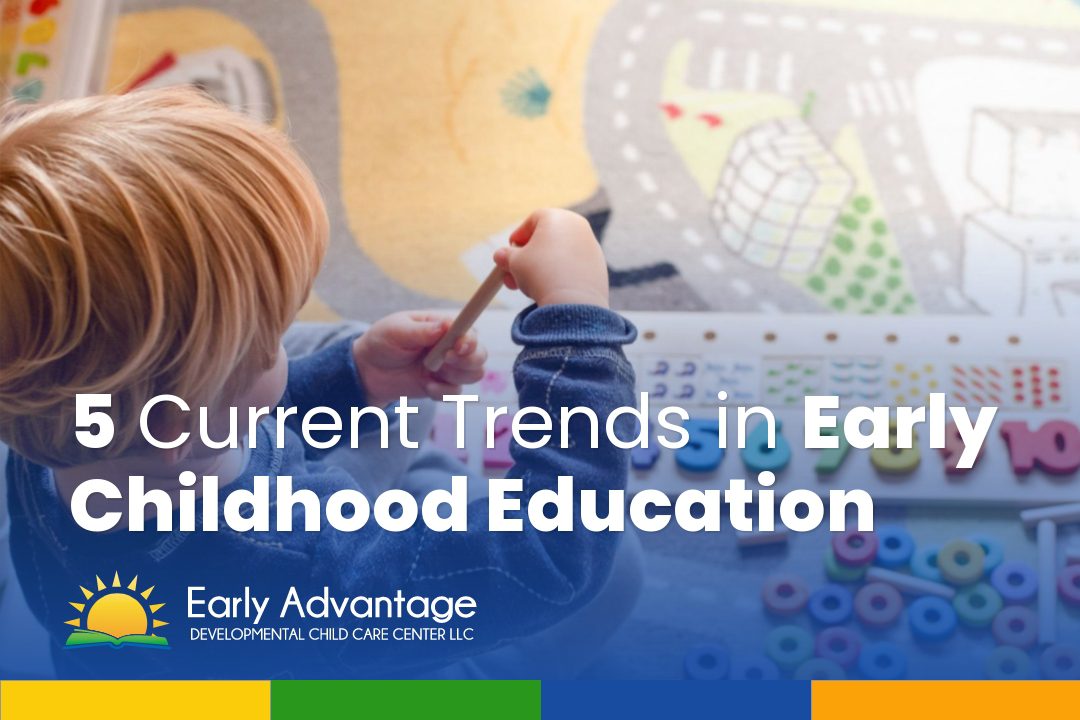Early childhood education is a critical stage in a child’s development, laying the foundation for their future academic success and personal growth. As educators strive to provide the best possible learning experiences for young children, they are constantly adapting and evolving their practices to meet the changing needs of today’s society.
In this article, we will explore five early childhood education trends shaping how children learn and grow in the childcare and preschool setting.
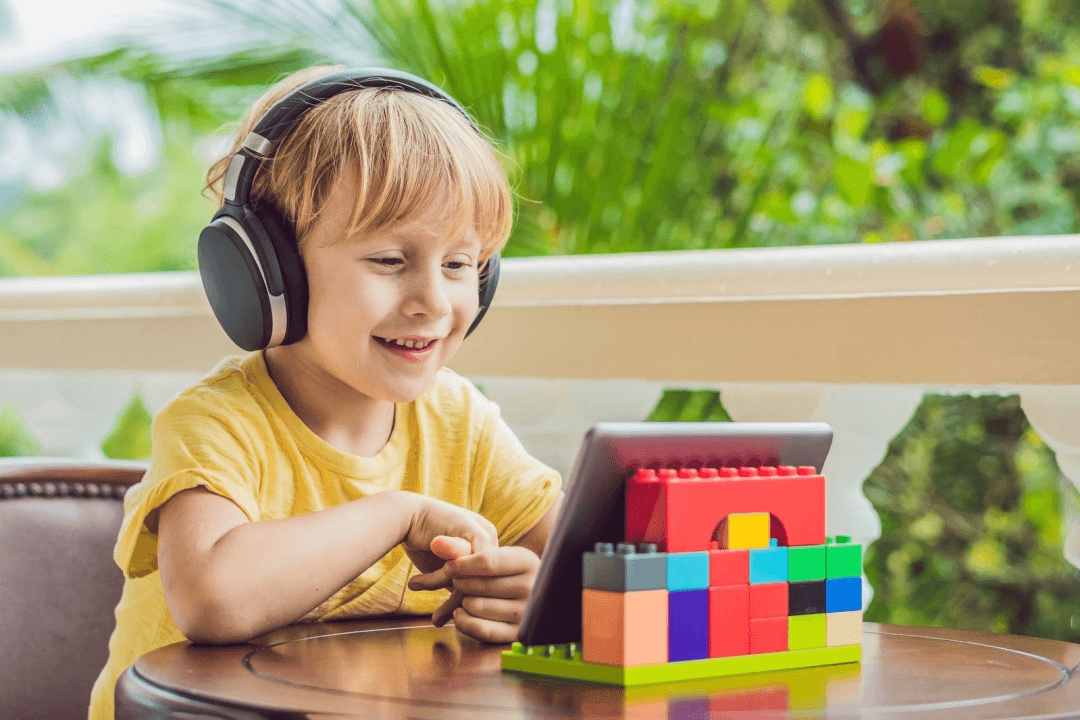
1.) Technology Integration in the Classroom
Integrating technology in the classroom can take many forms. From computers, tablets, smartphones, and educational software, educators today have found that involving different types of technology can be a great way to enhance child care as well as learning experiences. Here at Early Advantage, we include a structured amount of technology in classroom activities and curriculum in order to support student engagement, collaboration, and achievement.
Here are several ways Early Advantage is integrating technology into the classroom:
- Interactive Whiteboards:
These large display boards are a great way for our teachers to project content from a computer onto a screen. From there, teachers and our students can interact with it using touch or a stylus. Here at Early Advantage, whiteboards are used to play music, do exercise videos, read audiobooks, and utilize ABC Mouse activities that align with our Frogstreet curriculum. - Online Educational Resources:
The internet is a great source of educational resources that can be accessed by parents and teachers alike. For parents looking to assist their child’s learning, look into resources like video tutorials, interactive learning games, virtual field trips, or digital libraries. A great place to start would be the curriculum Early Advantage incorporates into our daily education strategy. A great example of this was when Early Advantage students were going to take a field trip to our state capital. We were able to introduce information and pictures about the state capital before this trip. This was a great way to get the children engaged in what they would be seeing and learning. It also helped our teaching staff expand learning on and around that field trip. The students were even able to take a virtual tour before heading up to the capital, so once they were there, they were so excited and engaged with what they were seeing in person. - Collaboration Tools:
Here at Early Advantage, we use Google Docs and shared printable materials, allowing students and teachers to work together on assignments and projects in real time. This is a great way to foster collaboration as well as communication skills. Early Advantage classroom staff can also access important attendance tracking information directly on their tablets. This happens in real time, so each staff member knows which children are signed in and which children are not. At Early Advantage, our app also allows different staff working with a child to see everything documented on that child. It greatly helps with collaboration between staff. Parents also have a specific app that allows them to quickly communicate with our staff and stay informed. - Adaptive Learning Platforms:
Adaptive learning software customizes instruction based on each individual student’s needs and performance. This type of learning software provides targeted practice exercises, offers real-time feedback, and adapts the difficulty level of content to maximize learning outcomes. Examples of this include ABC Mouse. - Data Analysis:
Some technology enables teachers to collect and analyze student data. When teachers can monitor student progress, they can better identify areas of improvement and adjust their instructional strategies for a more personalized approach. At Early Advantage, we use a digital format to track student achievements. Our student assessment platform, AIM, can be easily updated from a staff member’s tablet as they are witnessing the child or children demonstrate different skills. We also can include photo documentation to further support our assessment of each child.
Benefits of Technology Integration in the Classroom Include
- Improved Engagement:
Technology can offer many engaging elements to help teachers capture students’ attention and increase engagement. From videos to interactive software, teachers and parents alike can help children engage in different types of learning across different forms of media. - Enhanced Collaboration:
Collaboration is another benefit of including technology in a classroom. It can enable students to collaborate with their peers, share ideas, and receive feedback. - Personalized Learning:
Some forms of technology allow teachers to better assess and alter learning and instruction for each student. It’s beneficial in that it allows for each student to have customized lesson plans and helps a teacher better understand each student’s learning needs. When students have a personalized learning experience, they feel better supported as they learn at their own pace and can receive individualized support as needed. - Real-world Preparation:
Many school systems use technology in their day-to-day learning. By incorporating technology into our curriculum, students are better prepared for their future learning experiences in elementary school.
By incorporating technology in the classroom, teachers can transform the learning experience to help make it more engaging, personalized, and relevant to students’ lives.

2.) Play-Based Learning
Play-based learning is an educational approach that allows young children to learn and develop skills through play. It involves creating an environment that encourages exploration, discovery, and creativity while promoting social interactions and problem-solving.
There are several reasons why play-based learning is important in preschool and early education:
- Hands-on learning:
Play-based learning allows children to engage actively in the learning process. They can touch, feel, and manipulate objects, which enhances their understanding and retention of information. Whether it be free play or structured learning activities, it is key to allow young children to learn by using their hands. Early Advantage’s Frogstreet Curriculum is one way we are able to provide our students with hands-on learning experiences. Here, classrooms are equipped with many different materials that allow the students to explore at different times throughout the day. - Development of social skills:
Through play, children learn how to interact with others, negotiate, share, take turns, and resolve conflicts. These skills are vital for their social development and crucial for later life success. Through the implementation of the Conscious Discipline curriculum, students at Early Advantage are able to learn how to be a valued part of their school family and be a helpful friend to those around them. - Language and cognitive development:
Play-based learning allows children to practice and refine their language skills. They learn new vocabulary, develop storytelling abilities, and engage in imaginative play that enhances their cognitive abilities, memory, and problem-solving skills. - Emotional development:
Play allows children to express and regulate their emotions, understand social roles, and develop empathy towards others. It can also provide an avenue for dealing with stress or anxiety, fostering emotional well-being. By implementing the Conscious Discipline curriculum, as well as our Second Step curriculum, students learn how to resolve conflict and create stronger bonds with other classroom classroom mates as well as their teachers. It’s also a way for them to learn how to manage strong emotions that may come up when things do not go their way during play. - Creativity and imagination:
Play-based learning promotes creativity and imaginative thinking as children create scenarios, invent stories, and solve problems in their play. These skills are essential for innovation and adaptability in the future.
Overall, play-based learning is important in preschool and early education as it aligns with children’s natural ways of learning and development. It fosters their holistic growth, encompassing cognitive, social, emotional, and physical aspects while providing a solid foundation for future academic success.
Here at Early Advantage, we encourage play-based learning to students by offering different curricula to stimulate a child’s mind and encourage learning. One of the programs we use that incorporates technology and play-based learning is the Learning Without Tears curriculum.
Developed by an occupational therapist in 1977, the Learning Without Tears curriculum has evolved into a program incorporating play-based learning and active participation to help young learners. The concepts used in this curriculum help get children ready for kindergarten by teaching math, science, reading, and social studies.
By incorporating various tools, such as hands-on activities and educational digital apps, your child will learn school-ready skills in various ways. Educate yourself further about Learning Without Tears by visiting our curriculum page.
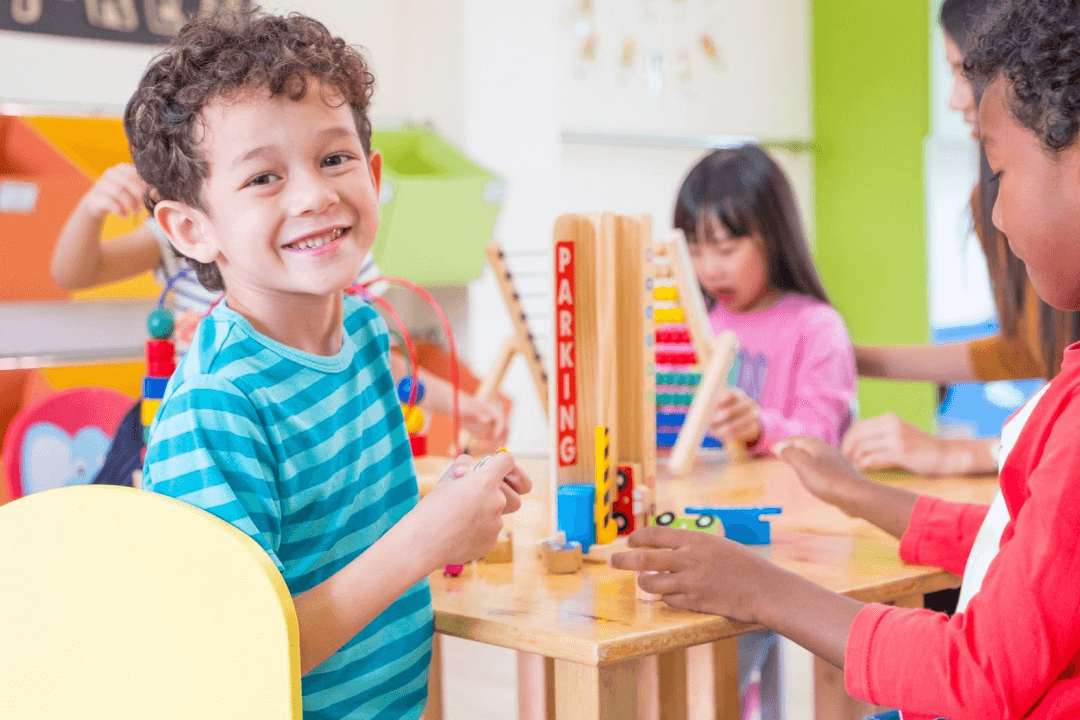
3.) An Emphasis on Social-Emotional Development
Social-emotional development refers to a child’s ability to understand and manage their emotions, form strong and positive relationships, and develop empathy and compassion for others. It plays a crucial role in a child’s overall development and significantly impacts their learning and future success. Here at Early Advantage, to help support the social-emotional development of our students, we use both the Conscious Discipline and Second Step curriculum.
Here are some reasons why learning to build social-emotional development is important:
- Well-being and mental health:
Social-emotional skills provide a foundation for emotional well-being and mental health. By teaching children to recognize and regulate their emotions, they are able to cope with stress, build resilience, and develop a positive self-image. We also believe students can learn from each other and that we are better when we learn compassion and understanding for people who are different than us. - Positive relationships:
Early social-emotional development helps children form healthy and supportive relationships with peers and adults. They learn to communicate effectively, resolve conflicts, and collaborate with others. These skills are essential for building friendships and maintaining positive interactions throughout their lives. - Academic readiness:
Social-emotional skills are closely linked to academic success. Children with a strong foundation in social-emotional development can better focus, concentrate, and engage in their learning. They also develop better problem-solving skills, critical thinking abilities, and self-discipline, which are all important for academic achievement. - Lifelong outcomes:
Social-emotional skills developed in early childhood lay the foundation for healthy development throughout life. They are associated with positive long-term outcomes such as higher educational attainment, better job prospects, and improved mental health.
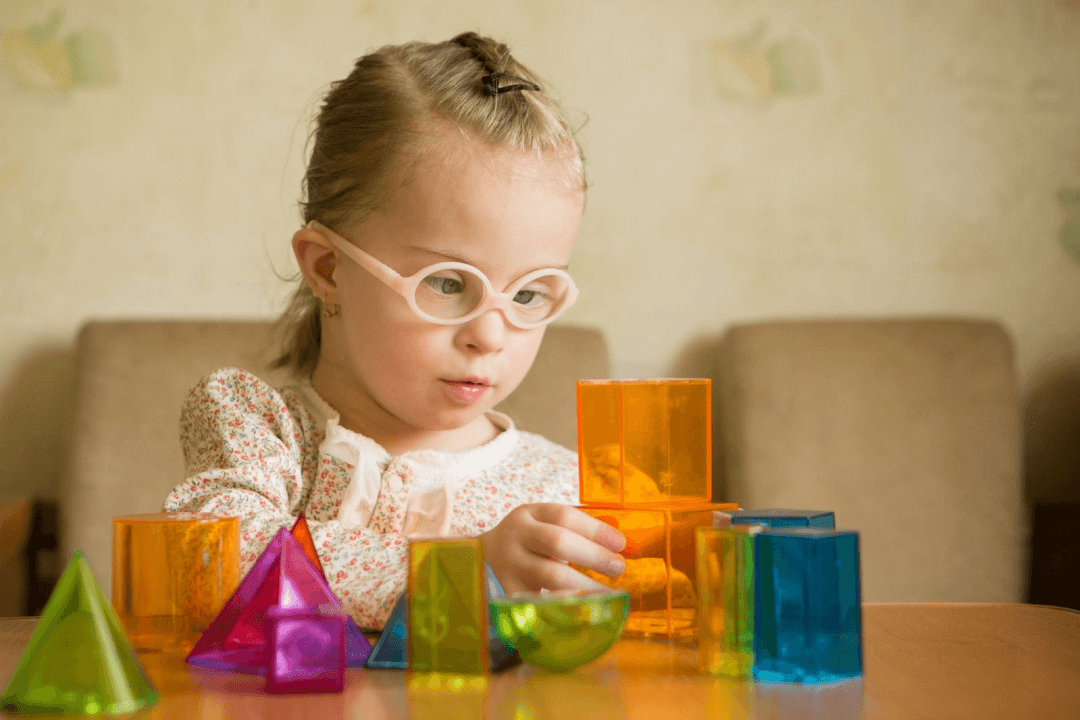
4.) Inclusive Education Practices
Inclusive education practices in early childhood education refer to the inclusion of all children, regardless of their abilities or disabilities, in regular education settings. This approach values diversity and promotes every child’s active participation and learning. Here at Early Advantage, we believe in promoting each child’s uniqueness and assisting their learning through individualized learning when needed.
Some of our inclusive education practices include:
- Individualized instruction:
Our educators provide children with differentiated instruction and accommodations to meet the unique needs of each child. By adapting materials, activities, and teaching strategies, we work to ensure every child can participate and learn at their own pace. The Frog Street curriculum helps to provide our staff with the scaffolding to ensure we are meeting children where they are. If a student needs more challenging activities or if we need to break it down more for another student, our curriculum allows for both situations. - Collaboration and co-teaching:
Early Advantage instructors work together in the classroom to plan and implement an inclusive curriculum. This can involve co-teaching, where two or more instructors co-lead a classroom and share responsibilities for all students. We also typically have classroom aides who help the teacher. They can take some of the tasks on so teachers can really focus on their interactions with the students. - Assistive technology:
Assistive technology, such as speech-to-text software or sensory tools, is a great way to support children with disabilities and assist them in accessing and participating in classroom activities. We work to ensure our tools are integrated into the learning environment so all children can benefit from them. - Peer support and peer-assisted learning:
We encourage all of our students, with and without disabilities, to work together and support each other’s learning. Our instructors encourage collaboration by developing activities that foster student interaction and cooperation. - A positive and inclusive classroom environment:
Having a welcoming and accepting classroom culture is important for every child. That’s why our staff celebrates diversity, promotes empathy, and encourages the inclusion of all children.
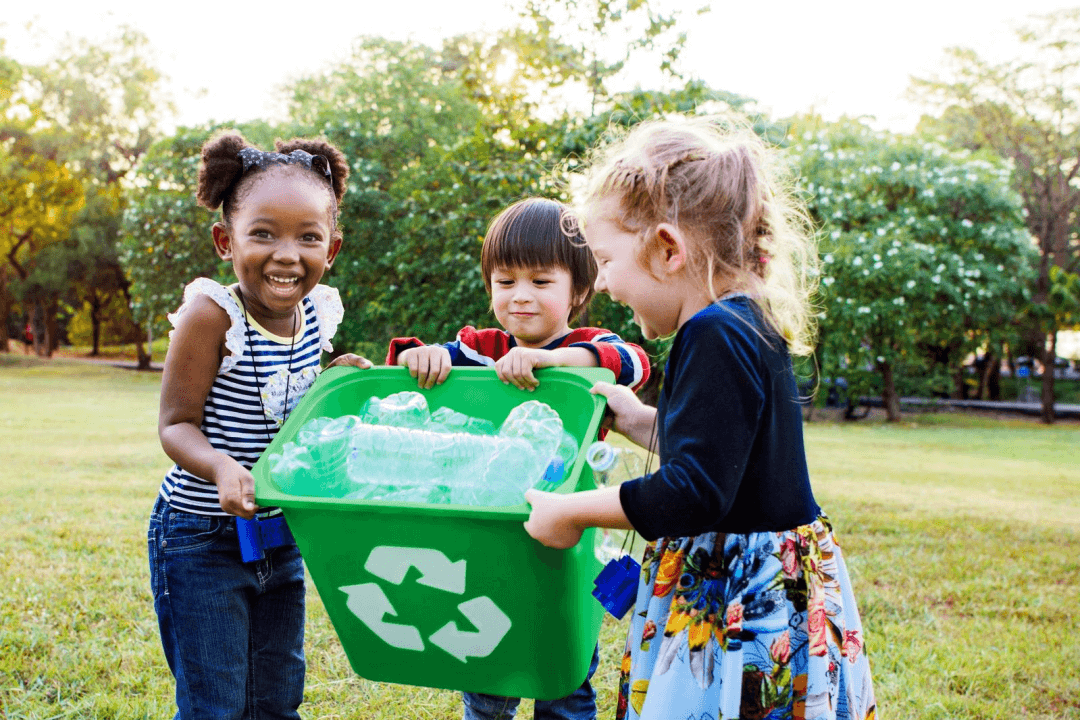
5.) Environmental Sustainability in Education
Environmental sustainability in early childhood education refers to incorporating sustainable practices and principles into a child’s daily routines, activities, and curriculum. Participating in this type of learning gives children opportunities to develop an understanding of the natural world, their place in it, and how to care for it.
At Early Advantage, some of the ways we believe in encouraging environmental sustainability include:
- Nature-based learning:
Outdoor play and exploration is a great way to help children connect with nature and develop a love for the environment. We believe outdoor play helps children cultivate curiosity, creativity, and exploration. Our facility even has an outdoor classroom space with built-in learning areas. This space includes raised garden beds, a water trough for water exploration, outdoor chalkboard and acrylic board, picnic tables, flower pots, sensory bins for exploring different natural materials, and more. This outdoor space gives children the opportunity to explore and learn and gives our teachers the opportunity to take their lesson plans to the outdoors. - Waste reduction and recycling:
Teaching children about the importance of reducing waste, recycling, and using materials efficiently can be a great way to engage children in environmental sustainability. It can be done through activities such as sorting recyclables and reusing materials for art projects. Here at Early Advantage, our students take an active role in protecting our environment. One way students do this is by going on garbage walks where they clean up litter they find. We also teach and practice the idea of using items. You can find many of our student’s projects made from items that have been repurposed. - Gardening and sustainable food practices:
Another way to encourage environmental sustainability is by showing children how to plant vegetable gardens or plant seeds. It’s a great way they can learn about growing their own food and how to care for and nurture plants. Each year, our students plant and care for a garden. They are hands-on during all the steps of the process, from planting seeds, watering, weeding, and harvesting. Once the vegetables are ready to harvest, they are then incorporated into our menu which is a great way to encourage healthy eating.
We believe that by incorporating environmental sustainability into early childhood education, we can help children foster lifelong habits and attitudes that promote stewardship of the environment. It can help children develop a sense of responsibility for the world around them and empower them to become environmentally conscious citizens.
Our Thoughts on The Current Trends in Early Childhood Education
We have explored the different childhood education trends and some ways we incorporate them into our curriculum.
Here at Early Advantage, we believe we can foster learning in children and shape how they approach learning through moderate technology use, play-based learning, creating an environment that promotes diversity and inclusion, and more.
As always, if you have questions about our offerings or want to tour our facility, we encourage you to contact us today.
